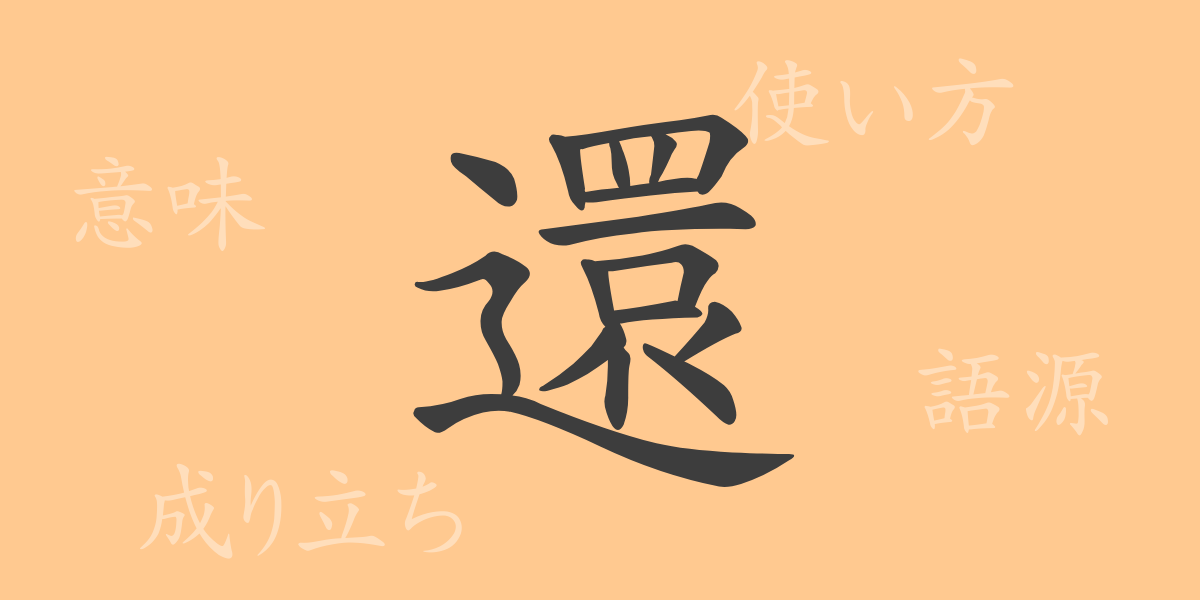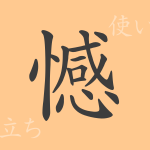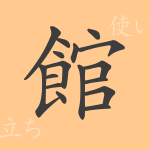Characters are not merely symbols. The history and meaning each one carries tell the story of a culture’s and language’s richness. Today, we focus on the Japanese Kanji “還” (Kan), exploring its deep history and contemporary usage. Through this article, embark on a journey to enrich your knowledge, from the etymology of “還” to idiomatic expressions.
The Origins of 還 (Kan)
Our journey to explore the etymology of the Kanji “還” (Kan) begins in ancient China. Originally derived from a word meaning “a bend in the river,” over time, “還” (Kan) came to signify the return of things to their original state or place, and by extension, it took on meanings such as “to return” or “to go back.” This evolution showcases the rich history of Kanji and the flexibility of language.
The Meaning and Usage of 還 (Kan)
The Kanji “還” (Kan) is used in various contexts to express the concept of something returning to its original position. Specifically, it is seen in words like “返還” (Henkan) or “還元” (Kangen), which denote actions such as “to return” or “to give back.” In the phrase “歳を還る” (Tosi-wo-kae-ru), it means to age, as in returning to the beginning of a cycle with the passing of years. Thus, “還” (Kan) is multifaceted in its everyday use.
Reading, Stroke Count, and Radical of 還 (Kan)
To fully understand the Kanji “還” (Kan), it’s important to know its readings and components.
- Readings: The Onyomi (Sino-Japanese reading) is “Kan”, and the Kunyomi (native Japanese reading) is “Kae-ru”.
- Stroke Count: “還” (Kan) is composed of 13 strokes.
- Radical: The radical is “辵” (Sinnyou), which is used in Kanji related to walking or advancing.
Idioms, Phrases, and Proverbs Using 還 (Kan) and Their Meanings
Japanese language includes many idioms, phrases, and proverbs that contain “還” (Kan). These enrich the meaning of words and the expressive power of the language.
For example, “還暦” (Kanreki) celebrates the 60th birthday, originating from the ancient Chinese zodiac cycle that completes every 60 years. “自業自得” (Jigoujitoku), meaning one’s actions return to oneself, shares a similar concept with “因果応報” (Ingaouhou). Furthermore, “返還要求” (Henkanyoukyuu) is used when demanding the return of something to its original state or owner.
Conclusion on 還 (Kan)
The Kanji “還” (Kan), from its origins to its modern applications, plays a significant role in the Japanese language. The fundamental concept of things returning to their original position is applied in diverse contexts, enabling rich linguistic expressions. Through this exploration, we have reacquainted ourselves with the depth of meaning in “還” (Kan) and the delicacy of the Japanese language. Let’s continue to cherish the history and meaning imbued in each word as we delve deeper into the study of Japanese.

























